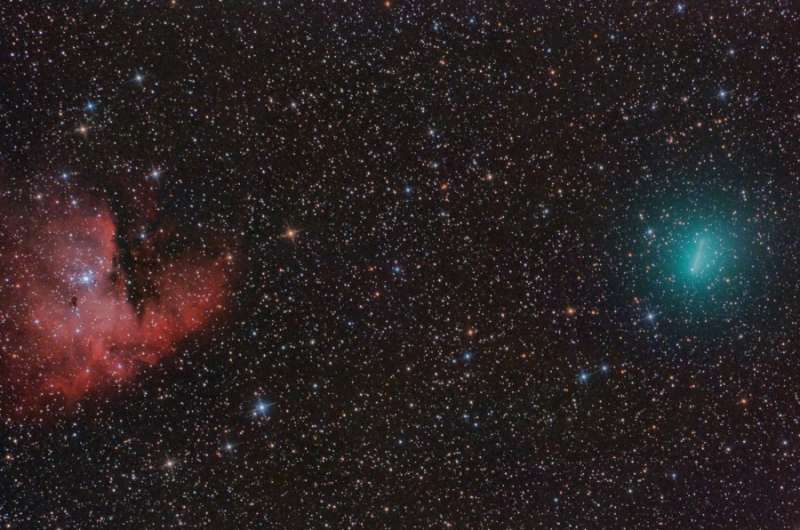Credit & Copyright: Jaime Fernández
Explanation:
Touring
the solar system with a 6 year
orbital period, small
comet Hartley 2
(103/P Hartley) will make its closest approach to
planet Earth on October 20 and its closest approach to
the Sun on October 28.
It may become a naked-eye comet, just visible in clear, dark skies.
Meanwhile the comet has been a tempting telescopic target,
seen here with
an alluring green coma as it shares the frame with emission
nebula NGC 281 and stars of
the constellation Cassiopeia on October 2.
The nebula's gaping profile defined by dust clouds against the red
glow suggests its more
playful moniker,
the Pacman Nebula.
An apparent short bright streak shows the comet's motion against the
background stars during the hour of accumulated exposure time.
Over the next few days Comet Hartley 2's motion will also
carry it across
a field of view featuring the famous
double star cluster in Perseus.
On November 4
a spacecraft from planet Earth will
actually fly within about 700 kilometers of
the comet's nucleus.
Now dubbed EPOXI,
that spacecraft was formerly known
as Deep Impact.
1999 2000 2001 2002 2003 2004 2005 2006 2007 2008 2009 2010 2011 2012 2013 2014 2015 2016 2017 2018 2019 2020 2021 2022 2023 2024 2025 |
Январь Февраль Март Апрель Май Июнь Июль Август Сентябрь Октябрь Ноябрь Декабрь |
NASA Web Site Statements, Warnings, and Disclaimers
NASA Official: Jay Norris. Specific rights apply.
A service of: LHEA at NASA / GSFC
& Michigan Tech. U.
|
Публикации с ключевыми словами:
NGC 281 - pacman nebula - comet - кометы - кома - туманность
Публикации со словами: NGC 281 - pacman nebula - comet - кометы - кома - туманность | |
См. также:
Все публикации на ту же тему >> | |
